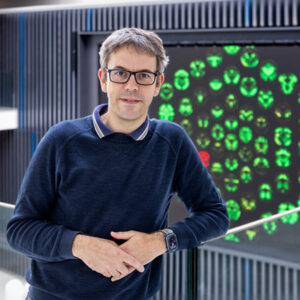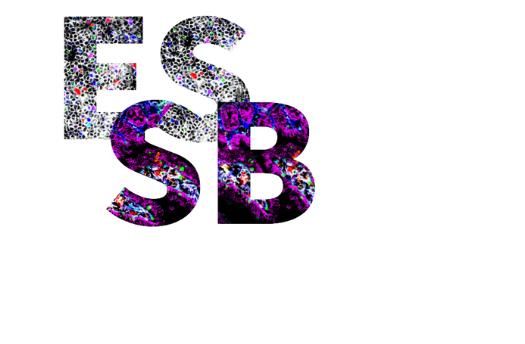Tumor Microenvironment
Chairs: Julio Saez-Rodriguez and Raza Ali
Friday, 13.09.2024, 02:00 pm

Invited talk by Raza Ali
CRUK Cambridge Institute, University of Cambridge, Addenbrooke’s Cambridge University Hospital ,NHS Foundation Trust
Charting the intact breast tumour microenvironment
The diagnosis and treatment of breast cancer continues to rely on decades-old techniques in traditional histopathology. Immunotherapy has proved effective among some patients but not others, and this variation is poorly explained by traditional assays. Using imaging mass cytometry – a technique that couples antibodies conjugated to rare earth metal reporters and time-of-flight mass spectrometry to infer epitope abundance at subcellular resolution – my group has shown that the complexity of the TME can be reliably enumerated in situ and used to predict response in a large randomized trial of neoadjuvant immunotherapy in triple-negative breast cancer. Moreover, we show how immunotherapy remodels the TME, and how resistant cancer cells endure treatment by analyzing serial samples collected over the treatment course. I will share our results and offer some insights on the wider implications for spatial cancer biology.
Biosketch
Dr Ali is Leader of the Systems Cancer Pathology group, based at CRUK Cambridge Institute, University of Cambridge, Associate Director for Clinical Academic Training , and an Honorary Consultant Pathologist at Addenbrookes hospital. He read medicine in Cardiff and began his training as a pathologist there before moving to Cambridge to undertake a PhD in the quantitative pathology and genomics of breast cancer, under the supervision of Prof Carlos Caldas. He completed his specialist clinical training in Cambridge as an NIHR Clinical Lecturer before moving to University of Zurich. In Zurich, he worked under the supervision of Prof Bernd Bodenmiller, inventor of imaging mass cytometry. There, he conducted research using highly multiplexed epitope-based tissue imaging to understand the principles of spatial organisation that characterise breast tumour ecosystems. His group uses imaging mass cytometry to understand the spatial dynamics of breast cancer through disease progression and treatment, in order to identify adaptations and biomarkers associated with relapse and response.

Invited talk by Oliver Stegle
Computational Genomics & Systems Genetics, German Cancer Research Center (DKFZ), Heidelberg Germany
Data infrastructures for spatial omics and advances incell segmentation
BioSketch
Prof. Dr. Oliver Stegle is the Head of the Computational Genomics and Systems Genetics Division at the German Cancer Research Center (DKFZ) and group leader at EMBL in Heidelberg, Germany. His laboratory is developing and applying statistical and machine learning methods for deciphering molecular variation across individuals, space and time. He coordinates the German Human-Genome-Phenome Archive, the health program of the European Laboratory for Learning and Intelligent Systems and is an ERC investigator.
Short talk by Spencer Watson
Department of Oncology, University of Lausanne, Ludwig Institute for Cancer Research, University of Lausanne, Switzerland; Agora Cancer Research Center Lausanne
Agora Cancer Centre, University Hospital Lausanne
Lundin Brain Tumour Centre, University Hospital Lausanne
Investigating Glioblastoma Recurrence with Spatial Multi-Omics
Glioblastoma recurrence is currently inevitable despite advances in standard-of-care treatment. An alternative approach of targeting the tumor microenvironment, specifically tumor-associated macrophages via CSF-1R inhibition, was found to dramatically regress established tumors in preclinical trials. While tumor regression was sustained in ~50% of individuals, recurrent tumors emerged over time in the remaining subset. These recurrences were ubiquitously associated with fibrotic scars that had formed during treatment. This same fibrotic response to treatment was also observed following surgical resection, radiotherapy, and in patient samples of recurrent glioblastoma. Investigating the complex evolving post-treatment tumor landscape required integrating multiple -omics approaches, including mass-spec proteomics, single-cell RNAseq, high-dimensional digital pathology, and spatial transcriptomics. Spatial multi-omics analyses of the post-treatment tumor microenvironment identified specific fibrotic domains as pro-tumor survival niches that encapsulated surviving glioma cells, and inhibited immune surveillance while maintaining the tumor cells in a dormant state. Integrated analyses revealed that targeting neuroinflammatory signaling and the TGF-beta pathway in a unique population of fibroblast-like perivascular cells could abrogate the fibrotic response to anti-CSF-1R therapy. Combinatorial therapies timed to the activation window of fibroblast-like cells both inhibited treatment-associated fibrosis and significantly improved survival in long-term preclinical trials of anti-CSF-1R therapy.
Short talk by Ann-Marie Baker
Centre for Evolution and Cancer, Institute of Cancer Research, London, United Kingdom
Spatial analysis reveals reshaping of tumour-immune dynamics at the transition to invasive colorectal cancer
The introduction of bowel cancer screening has led to an increase in the detection and removal of pre-malignant adenomas, however many of these would never progress to colorectal cancer (CRC) within a patient’s lifetime. This implies a key evolutionary bottleneck at the transition from adenoma to carcinoma, with immune surveillance likely playing a central role in suppressing the outgrowth of invasive cells. Here we analysed a cohort of “ca-in-ads” (adenomas with a small focus of cancer) to provide a unique snapshot of the invasive transition. We combined genomics, spatial transcriptomics, digital pathology and multiplex imaging, concurrently deriving the distribution of tumour clones, their gene expression and their interplay with the immune microenvironment.
We performed multi-region low-coverage whole genome sequencing and T-cell receptor sequencing on formalin-fixed paraffin-embedded ca-in-ads from 40 patients. For a subset of cases we performed spatial transcriptomics using the 10x Genomics Visium platform, including custom probes to detect T-cell clones of interest. We applied a deep learning cell classifier to haematoxylin and eosin (H&E) stained sections to determine the abundance and spatial distribution of eight cell types, with detailed immunophenotyping on selected cases (using a 50-marker panel on Akoya’s PhenoCycler-Fusion).
We found a significant increase in copy number alterations in carcinoma regions relative to adenomas, and this was accompanied by a large shift in the composition of the T-cell repertoire. Examples of T-cell clonotypes that appeared unique to either the adenoma or the invasive cancer were validated using Visium. Digital pathology and cyclic immunofluorescence revealed significantly increased infiltration of macrophages and neutrophils in regions of invasive cancer. Taken together our analysis suggests a striking reshaping of tumour-immune dynamics at the transition to an invasive phenotype in CRC. Understanding what governs this invasive shift could highlight new avenues for cancer prevention or identify individuals at risk of CRC progression.
Short talk by Christina Schniederjohann
Department of Hematology, Oncology and Clinical Immunology, Medical Faculty and University Hospital Düsseldorf, Heinrich Heine University Düsseldorf, Moorenstraße 5, 40225, Düsseldorf, Germany
Center for Integrated Oncology Aachen-Bonn-Cologne-Düsseldorf (CIO ABCD), Düsseldorf, Germany
Molecular Medicine Partnership Unit (MMPU), Heidelberg, Germany
Department of Medicine V, Heidelberg University Hospital, Heidelberg, Germany.
Microenvironmental Factors Impacting Chemotherapy Response in B-NHL
The tumor microenvironment (TME) and its spatial architecture are known to influence therapy effectiveness. However, the spatial organization of diffuse large B-cell lymphoma (DLBCL) remains largely unexplored. Here, we examine the differences in cellular composition and spatial architecture in DLBCL and correlate these findings with clinical outcomes following chemoimmunotherapy.
Using CO-Detection by indEXing (CODEX) we analyzed the cellular composition of aggressive B-cell non-Hodgkin lymphoma samples from 193 patients at initial diagnosis, who received chemoimmunotherapy. Samples were assembled in tissue microarrays and stained with a 54-plex antibody panel targeting microenvironmental cells along with key functional markers of malignant B cells.
The cellular composition of the DLBCL microenvironment varied significantly among samples but remained consistent across technical replicates. Among others, lymphoma-infiltrating T-cells ranged from 0.7% to 85% of all cells, with a mean frequency of 29%. We could show that a higher infiltration of cytotoxic T-cell is linked to favorable outcomes, while exhausted cytotoxic T-cells are correlated with poor outcomes.
We examined the spatial interactions between different cell types and identified seven distinct cellular neighborhoods across patients, based on the 30 nearest neighboring cells. The composition of these neighborhoods varied between patients, likely reflecting different interaction patterns between the tumor cells and their microenvironment. Patient samples could be divided into three distinct groups based on these spatial patterns including one immune-cell deficient group and two distinct immune-cell enriched groups.
Our results underline the importance of microenvironmental factors such as T-cell infiltration for clinical outcome after chemoimmunotherapy in DLBCL. Further, the neighborhood analysis revealed not only a strong heterogeneity between patients but also recurrent patterns that are similar across patients. Linking these spatial subgroups to clinical and genetic annotations might allow us to better understand the spatial architecture of DLBCL and reveal insights into spatial patterns that mediate therapy response.


